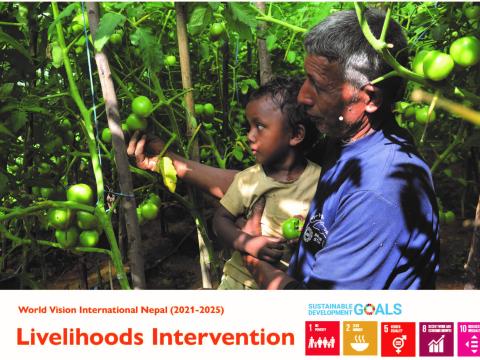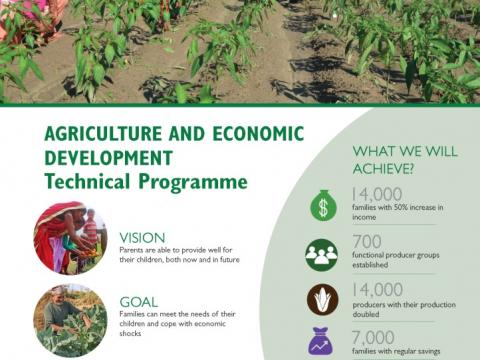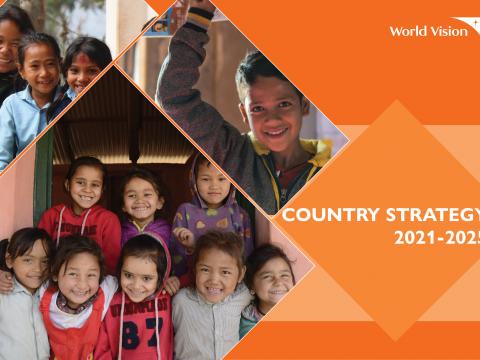Nutrition and Livelihoods intervention - overview
Télécharger
World Vision International Nepal's nutrition and resilient livelihood intervention aims to increase in children who are well nourished (age 0-5).
In fiscal year 2023, through the interventions of the nutrition and resilient livelihood program, capacity enhancement of different structures like Health Facility Operation and Management Committee, Citizen Voice and Action groups, Health Mother Groups, producer groups, ultra-poor families, and other relevant stakeholders has been progressed. The data supports a good improvement in service accessibility across health, nutrition, livelihood and WASH through different supportive interventions.
The key achievement in the fiscal year 2023 were:
-
104,729 children (G-54,963; B-49,667) and 76,092 adults (M-15,487; W-60,605) benefitted from nutrition and resilient program interventions in 2023.
-
74% of children received minimum dietary diversity, an improvement of 27 percent.
-
28,579 children were monitored in growth monitoring and promotion sessions to observe their nutritional status. Of these 15,744 (78.6%) were registered in Positive Deviance Hearth Sessions and supported to improve their weight through a community-based feeding program.
-
6,481 pregnant women and mothers/ caregivers of children 0-59 months reached with nutrition and intellectual disability counseling during the year.
-
Seven drinking water schemes were constructed with 228 households benefitting from improved access to water. Similarly, 360 handpumps were installed benefitting 2,127 people.
-
61 citizen voice and action (CVA) group were mobilised to developed health service improvement action plans
-
Of 800 supported households, 563 (70%) who faced a disaster were able to recover and live at the level they did before the disaster, indicating that positive resilience is being developed.
-
More than 8,000 producers (73% women) in 365 producer groups were engaged in market-led production with increase in production by 30%.
-
More than 5,500 members (86% women) are empowered and practicing positive saving behaviors and improved household income and expenditure management, through participation in 278 Saving for Nutrition (S4N) groups.
-
92 producer groups sold a product collectively in the market during the year and, 492 producer groups were led by women.
-
337 ultra-poor households have graduated out of poverty after fulfilling the locally developed criteria in four pillars and 81 households who were not receiving social protection schemes, because of the project effort succeeded in receiving such schemes during the year.
-
45 climate schools were completed where more than 2170 farmers were engaged in practicing climate-smart agriculture techniques to increase production.
This factsheet provides an overview of World Vision International Nepal’s Livelihoods interventions, 2021-2025.



